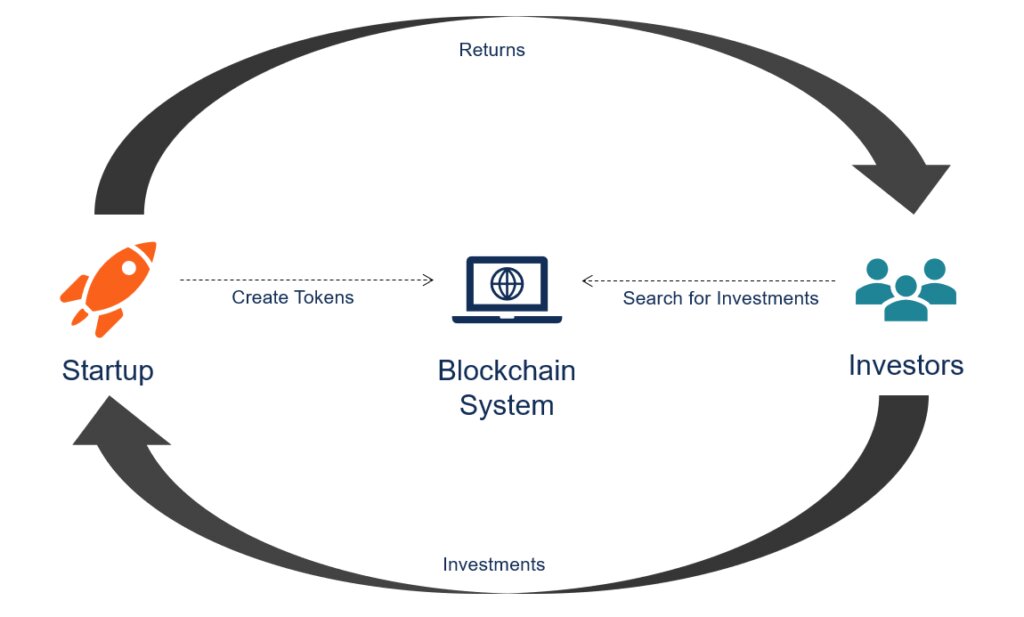The digital assets such as the cryptocurrencies and the Initial Coin Offering or the ICOs continue to evolve and raise interest from the main street investors. Billions of dollars are raised in the ICO financings and more than a thousand cryptocurrencies are currently available. The ICOs are rapidly altering the cryptocurrency markets and are proving to tempt the investors. It is also challenging for most of the individual investors to make sense of these complicated investment products. It is also challenging to determine the several risk levels that are associated with them.
The companies and the individuals are considering the ICOs as a method to raise capital or to participate in the investment opportunities. While the virtual assets and the technology behind them might present a new and efficient means to carry out the financial transactions, they also introduce the increased risk of fraud and manipulation as already stated owing to the fact that the market for these assets are comparatively less regulated than the traditional capital markets.
If you are interested in knowing what an Initial Coin Offering is, then you have come to the right place. This article is sure to help you understand the concept of ICO, how it works, its risks and the benefits.
What Is An Initial Coin Offering (ICO)?
The term “ICO” stands for Initial Coin Offering and is a brand new way to raise capital for all the blockchain related projects by selling the cryptocurrency. The new projects utilize it for selling the freshly minted cryptocurrency tokens in the exchange for Bitcoin (BTC), Ether (ETH) and the several other cryptocurrencies and even at times, the fiat currency. In a way, it resembles the IPO or Initial Public Offering, where the ICOs are mainly unregulated and permits little to none rights to the investors.
The main advantage of the ICOs is that they eliminate the intermediaries from the capital-raising process creating direct connections between the investors and the companies. Additionally, the interests of both the parties are also aligned.
Using the ICO trading platforms, the investors receive unique cryptocurrency tokens in exchange for their monetary investments in the business. It is a means of crowdfunding via the creation and sale of a virtual token to fund the project development.
This unique token functions as the currency unit that offers the investors access to specific features of a project that is run by the issuance company. These tokens are unique as they aid in funding the open-source software projects which otherwise would be tough to finance with the traditional structures.
History Of ICOs In A Gist
The history of ICO started back in 2013 when the very first ICO was held by Mastercoin (this was rebranded as Omni Layer), which is a digital currency and communications protocol. It had raised approximately $5 million. In no time, it was followed by the Ethereum ICO that managed to raise nearly $18 million at that time.
Since 2014, the market for the ICOs has been steadily growing. However, it did not experience any explosion until the years 2017 and 2018. In 2017 alone, it saw 875 ICOs, which is almost 30 times more than in 2016. They have aided to raise over $6.2 billion as compared to $96 million raised in 2016. Yet, the record year for the ICOs had been 2018 bearing over 1200 ICOs that resulted in raising $7.85 billion.
Activities started to reach the peak in 2016 when 43 ICOs consisting of Iconomi, Waves, Lisk and Golem had raised $256 million. An autonomous investment fund called the DAO project had aimed to encourage the Ethereum (ETH) ecosystem development by permitting the investors to vote on projects for funding. Not long after the sale had raised a record of $150 million, a hacker had siphoned off nearly $60 million worth of ether. This led to the collapse of the project and a hard fork of the Ethereum protocol was created.
The largest ICO till date is EOS, which is a decentralized application network raising more than $4 billions in various rounds during the years 2017 and 2018. Following the ICO explosion in 2017 and 2018, the interest in the Initial Coin Offerings started to fade.
How Does ICO Work?
A company or a project specifies its actual intentions to hold an ICO by publishing a whitepaper. It explains the project, its goals and the total amount of funding it requires to raise when the ICO has been scheduled. Additionally, it also contains various other information that aids the investors to make a decision whether or not to participate.
In exchange for making an investment, the investor receives the cryptocurrency of the project that is usually referred to as “Tokens”. Based on the project, the tokens might be acquired in exchange for the other crypto coins or fiat currency such as Euros, US dollars etc.
For example imagine that you are a Silicon Valley startup having a great idea for a new crypto system. Probably that you want to streamline the parent or the babysitter payment system making it digital and encrypted. Let the cryptocurrency of the project be called BabyCoin.
The sole problem with this is that you require people to provide you money or financial help so that you can actually make the currency. Now, you might visit a bank or try getting venture capitalist investors. But what if you can raise the money without the need to give up any of the ownership of the company? This is when you would like to enter the ICO.
How will you proceed? You will need to create a whitepaper or a document that essentially details the exact way the system would perform, make a beautiful website and explain why it is a great idea and how it would be beneficial. Following this, you would ask other people to send you money or funds.
You can accept payments in Bitcoin (BTC) or Ether or even fiat currency. In return, you promise to send them back some of the project’s cryptocurrency or BabyCoin. The investors hope that the received crypto coin will be used a lot and will be in high circulation that would raise the value of the currency.
However, it is important for you as an investor to note that unlike the IPOs, investing in an ICO would not result in you having the ownership stake of the company that you are sending money to. You are actually gambling that the current worthless currency that you have paid for now will later increase in its worth and then make you money.

What Are The Types Of Initial Coin Offerings?
There are mostly two types of ICOs viz., the Private ICOs and the Public ICOs.
Private ICO
In the private Initial Coin Offerings, just a limited number of the investors is allowed to participate in the process. Usually, only the accredited investors such as the financial institutions and the high net worth individuals can take part in the private ICOs while a company might choose to set a minimum investment amount.
Public ICO
The public Initial Coin Offerings are just a form of crowdfunding targeting the general public. The public offering is a democratized form of investing as almost anyone can become an investor. Nevertheless, owing to the regulatory concerns, the private ICOs are becoming an even more viable option in comparison to the public offerings.
The rise of the digital currencies and the blockchain technology is aiding in boosting the popularity of the ICOs. back in 2017, over $7 billion was raised using the Initial Coin Offerings. In the next year, the figure was almost doubled. The largest ICO has been executed by Telegram till date which is an instant messaging service provider. Utilizing the private ICO, the UK registered company had raised more than $1.7 billion.
What Are The Types Of Tokens Used In ICO?
As already mentioned, via the ICO fundraising model, the startups can raise capital by issuing the tokens on a blockchain and then distribute the tokens in exchange for a financial contribution. These tokens can be transferred across the network and can be traded on the cryptocurrency exchanges. The tokens can serve a myriad of functions from granting the holder an access to a specific service to entitling them to the company dividends. Based on its function, the token might be classified as – the utility tokens or the security tokens.
Utility Tokens
The utility tokens are also termed as the “user tokens” or the app coins that represent the future access to the business’s product or service. Via the utility tokens, the ICO startup can raise capital for funding the development of their blockchain projects in exchange for the future access of the users to the service. The utility tokens are not designed to be a pretty standard investment for a company’s share and if they are properly structured, this feature will exempt the utility tokens from the federal laws governing the securities.
By curating the utility tokens, a startup can sell the digital coupons for the service in development. This is similar to the way electronic retailers accept the pre-orders for the video games that might not be released and be on hold for a couple of months.
One of the examples of the utility tokens is Filecoin that raised $257 million by selling the tokens that offers the users with access to its decentralized cloud storage program. The businesses that offer these utility tokens remain trending to avoid using the term ICO and favors the term such as the token generation events and the token distribution events for ensuring that they are not appearing for engaging in a securities token.
Security Tokens
The security tokens are just the opposite of the utility tokens. In this case, if a token received its value from an external and tradeable asset or it possesses the power to increase in value depending upon the efforts of the others, then it might be classified as a security token. This might also become subject to the federal securities regulations.
Failure to abide by all of these regulations might result in hefty penalties and might also threaten to derail a project. Thus, a business must meet all of its regulatory obligations. As soon as the token is properly classified, a wide variety of applications are allowed where the most promising one is the ability to issue tokens that represent the shares of the company stocks. One of the online retailers namely “Overstock.com” is recently involved in the practice.
The company had announced that one of its portfolio companies, tZERO would be holding an ICO in order to fund the development of a licensed security token trading platform. The tokens of the company tZERO had been issued in accordance with the SEC regulations and the CEO of Overstock, Patrick Byrne had stated that the holders of the token would be entitled to the quarterly dividends that are derived from the profits of the tZERO platform.
Several industry observers including Mr. Bryne relies on the concept that the mainstream companies one day will issue shares via ICOs, either in place of or in addition to the traditional public offerings.
Examples Of The Initial Coin Offering Cryptocurrency
The Initial Coin Offerings are a very popular method to raise funds in the cryptocurrency space. It is a fact that most ICOs fail. However, there are also occasionally some successes. Here are some of the examples of the major ICOs (Initial Coin Offering list) that came into being over the years.
- Ethereum (ETH): A lot of the cryptocurrency enthusiasts had been excited about Ethereum and the programmable blockchain of the protocol when the July 2014 ICO took place. Nevertheless, it ended after raising $18.4 million and then it became the second largest cryptocurrency.
- Cardano (ADA): Cardano had improved on the aspects of Ethereum and possessed an even more successful ICO. Back in January 2017, it had raised $62.2 million. Eventually it would break into the top five cryptocurrencies by the market cap.
- Tezos (XTZ): Tezos had raised$232 million via its ICO in July 2017. However, it was not a complete success. There had been numerous delays in distributing the tokens that were sold via the ICO leading to a class-action lawsuit. Tezos had raised a $25 million settlement with all the parties in 2020.
- Dragon Coins (DRG): There have been a couple of failures in ICO and one of the most high profile examples is the Dragon Coins (DRG). In the month of March 2018, it had raised $320 million. A chain of controversies had caused a near immediate price drop when it was available for public trading. In the last year that is in 2021, the market cap of Dragon Coins nose dipped to below $1 million.
The investors are drawn to the ICOs for the dream to purchase early to a successful cryptocurrency. Though this is possible, it generally consumes a lot of research and time sorting via the vast numbers of the upcoming ICOs. Taking into consideration the risks involved, it is best to approach with caution.
Initial Coin Offering Platforms
Below is a list of Initial Coin Offering platform or Initial Coin Offering website to consider:
- Coin Factory
- CoinGecko
- CoinLaunch
- CoinSchedule
- CoralProtocol
- ICO Bench
- ICOcreed
- ICO Drops
- ICOHunter
- TokenMarket
The Pros & Cons Of ICOs
The Initial Coin Offering or ICOs possess some advantages and disadvantages. Below are some of the well known pros and cons.
Pros
- ICOs offer a very high potential profits if you are able to determine which crypto is a good investment. As you are purchasing early, the prices are mostly lower and some of the ICOs also offer tokens at a much discounted rate.
- They are accessible to anyone. Unlike some of the IPOs, the ICOs do not have any restrictions on who can actually invest.
- It is a relatively fast and efficient way for the startups for raising the funds.
- The speed of the token creation is also high as it only takes 100 lines of codes for creating an Ethereum based token such as ERC-20 and in theory the tokens can be created and distributed in a relatively shorter time frame.
- The tokens are sold into the global market that operates round the clock.
- The ICOs are capable of raising capital directly from anyone with a crypto wallet from anywhere in the world.
- The tokens do not offer ownership rights to the token holders unless they have been explicitly programmed into the smart contract.
- The disclosure requirements and the paperworks can be minimal based on the regulatory status of your token.
Cons
- As the crypto projects are very much volatile in nature, there is a significant risk that the token loses its value or completely ends up failing.
- The lack of the regulation results in the huge number of scams and mediocre projects. Only by sorting via the upcoming ICOs for a quality project, it might feel like a pretty challenging task.
- It generally seeks some knowledge of the cryptocurrency wallets to invest in the ICOs. For all those who are new in the cryptocurrency space, it is often easier to stick to the cryptocurrency stocks or the publicly traded coins.
What Are The Risks Of An ICO?
Just as the returns on an investment in a crypto Initial Coin Offering can be hefty, the dangers associated with it can also be quite high. The crypto market is still under-regulated. This means that the investors might be left on their own if an ICO turns out to be a scam or even if the project fails. You must know that neither of these situations is uncommon. With the insufficient regulations and immutable transactions, you can solely trust yourself for making the right financial decisions.
On the contrary, the holders of an ICO might also end up trapped by the financial regulations as well. For instance, many of the ICOs had to be delayed or moved owing to the infamous Chinese ban on the ICOs and the exchanges in 2017.
Risks Of The ICO Buyers
As you can understand by now, both the ICO investors and the organizers have to face specific potential risks. The following are some of the things that the buyers might face:
- Investing in the inexperienced teams possessing an unproven or experimental business model in addition to high risk of default.
- No regulatory protection present.
- Limited transparency based on the project progress and issues.
- The risk of investment in an elaborate scam or the pump and dump scheme.
- It might be challenging to grasp the complete picture of the ICO prior investment.
- The ICO token value might be entirely speculative and experience certain wild fluctuations.
- The hype of an ICO might also surpass its actual utility.
Risks Of The ICO Organizers
The ICO owners might face a risk due to:
- Uncertain regulations that might result in extra costs, fines or sentences.
- Uncertain regulatory difference between the security and the utility tokens.
- The unstable investment currencies that might devalue super fast.
- Little to no information regarding the token holders.
- The interest in the Initial Coin Offering trend has been fading since early 2018.
- Responsibility in case the project’s security gets compromised and ends up harming the investors.
- Risk of issuance of incorrect documentation in the regulated states.
How Are The ICOs Regulated?
The ICOs are highly unregulated. In the United States, there are no such regulations that specifically apply to the ICOs. Nevertheless, if an ICO fits the classification of a securities offering, it would then fall under the jurisdiction of SEC and is regulated by the federal securities laws.
Some of the countries have also adopted a strict step and banned the ICOs completely. The countries that have banned the ICOs include:
- China
- Nepal
- Bangladesh
- Macedonia
- Ecuador
- Bolivia
ICO Vs IPO: How Are Both Different?
The Initial Coin Offering is often compared to the IPOs or the initial public offerings. Both the IPOs and the ICOs permit the companies to raise funds.
The basic difference between the IPOs and the ICOs is that the former involve selling the securities and are subject to much rigid regulations. A firm that is looking forward to conducting an IPO, needs to file a registration statement with the U.S. Securities and Exchange Commission to receive its approval. The registration statement must include a prospectus that offers financial statements and the potential risk factors.
On the contrary, an ICO refers to the sale of a crypto coin and not a security. That being the reason, it does not bear any formal requirements in the same way IPO does. In case a company tries to get around the requirements through an ICO for something that is equal to securities, then it would run through the legal troubles.
Though both the IPOs and the ICOs have their respective risks, the IPOs are much safer as compared to the ICOs as the former are regulated. If you are already overwhelmed by all the ICOs that are there currently, then you can go for one considering the risks.
Are ICOs Legal?
The ICOs might be legal. There is no clear regulatory framework regarding the ICOs yet, so this makes it a completely gray area. In the near future, it is likely to be regulated. Thus, most of the ICOs are required to comply with the KYC (Know Your Customer) or AML (Anti Money Laundering) rules. As of the present, it is too challenging to impose any limits as most officers are hesitant to put restrictions on a potential technology that is world changing.
The United States Securities and Exchanges Commission (SEC) treats the ICOs very differently. If the token is sold as simply a utility token, then it does not classify as financial security. Nevertheless, if the token bears qualities of an equity in having a sole purpose for appreciation in value and benefits the investors, then it might be treated as security and needs to comply with the legal processes.
At the end, until a regulatory framework is imposed, most of the people will keep on using ICOs as a tool to fundraise.
Identifying A Scam ICO
The exit scam ICOs are very popular and thus the ability to identify them might save you a lot of money. As per Ernst & Young, nearly 10% of all the funds that are raised by the ICOs ends up getting into the scammers’ wallets. The following are some of the proven ways to identify a scam ICO.
- Anonymous Team: Many of the scams literally do not publicize their team. Thus, no one can verify the actual person behind the project. It serves as a major red flag.
- A Lucrative Offer: If a project offers you unexpected returns or seems too good to be true or offers impossible products, then you can count it as a major red flag.
- No Roadmap: If a startup is serious, it will always have a future plan and is also open about the further steps. If you see that the future of the project is next to nothing, then it is probably non-existent.
- Bitcointalk Thread: A legitimate method to launch an ICO is by announcing it on the BitcoinTalk.org. It is considered as the largest forum for Bitcoin and cryptocurrencies while the legit projects will definitely participate in the discussions and answer all the questions.
- Code: The credible projects will surely commit their code to Github where they can seek other people’s reviews. Thus, no code means no project.
- Necessity Of The Token Or Blockchain: Most of the projects might function well despite the presence of a distributed ledger. Similarly, many projects try to take advantage of the ICOs solely to collect extra money. Thus, you need to ask yourself if it really needs its own coin.
- PR & Media Activity: The trustworthy projects hire the qualified marketing specialists who dedicatedly manage to create an active and engaged community. Additionally, it is also a good sign if the project receives positive mentions in the quality publications.
With this, you need to remember that not all ICOs are scams, and they also offer a legit way to raise funds for legit and cool projects.
Final Words
The Initial Coin Offering is an incredibly new method of raising money and everyone is trying to adapt to this new method without getting oneself into trouble. If you are sure that you can make a hit with a promising ICO, you can go ahead with that but you need to do your homework thoroughly beforehand. Crypto is all about high risk as well as high returns and that said, ICOs are no different. In some other article, we will describe how to do an Initial Coin Offering.
- Bitcoin DCA: A Beginner’s Guide To Make Your Investments Easy - 27/03/2025
- 6 Most Funny Bitcoin Stories You Will Ever Know - 27/03/2025
- Easy Definition And Uses Of Crypto Regulatory Sandbox - 03/08/2024
 Crypto Venture News One stop Crypto Track Down
Crypto Venture News One stop Crypto Track Down 






